
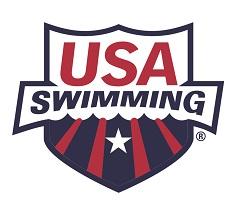 USA Swimming is: the national governing body for the sport of swimming in the United States. USA Swimming is a 400,000-member service organization that promotes the culture of swimming by creating opportunities for swimmers and coaches of all backgrounds to participate and advance in the sport through clubs, events and education. Its membership is comprised of swimmers from the age group level to the Olympic Team, as well as coaches and volunteers. USA Swimming is responsible for selecting and training teams for international competition including the Olympic Games, and strives to serve the sport through its core objectives: Build the base, Promote the sport, Achieve competitive success.
USA Swimming is: the national governing body for the sport of swimming in the United States. USA Swimming is a 400,000-member service organization that promotes the culture of swimming by creating opportunities for swimmers and coaches of all backgrounds to participate and advance in the sport through clubs, events and education. Its membership is comprised of swimmers from the age group level to the Olympic Team, as well as coaches and volunteers. USA Swimming is responsible for selecting and training teams for international competition including the Olympic Games, and strives to serve the sport through its core objectives: Build the base, Promote the sport, Achieve competitive success.
Sports Destination Management: Swimming is a popular sport. What kind of growth figures does it have?
Pat Hogan: Our membership follows a pattern. We tend to see it grow about one percent a year during the three years before the Olympic Games. The year after those Games, there is a big percentage jump. In 2009, we saw 11 percent growth. In 2013, there was 13 percent growth. We’re also very pleased with the fact that our retention rate is at an all-time high.
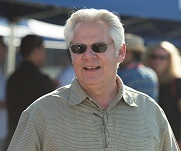
Hogan: We are in the process of expanding an initiative called Swim Today, which is designed to encourage kids to move from swimming lessons into competitive swimming. There is a special website, www.swimtoday.org, that allows parents and kids to find a swim club in their area, and it includes marketing materials for those clubs as well. We actually started the initiative in 2013 as we were enjoying the end of the Olympic bump and we wanted to keep it going. We also looked at industry research that said people thought it was a good skill for their kids to learn, but they didn’t really see it as a fun sport or a team sport. We know once they start participating, those perceptions change. The program has the tagline, “The Funnest Sport There Is.” We’ve heard from a few teachers about incorrect grammar, but we wanted that edge to the campaign.
SDM: What new initiatives or events has USA Swimming planned?
Hogan: Something we’ll be starting in 2015 is the Futures Championship events. We have our Phillips 66 National Championships and our Speedo Junior National Championships, and we had the Sectional Championships. But we wanted to create a kind of ‘steppingstone’ to address the increase we had experienced in the number of athletes, especially ages 13 to 16, since 2003. The Futures Championships will be a series of three meets that are held at the end of the summer.
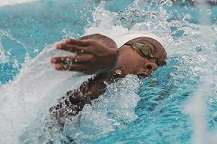
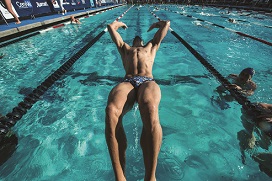
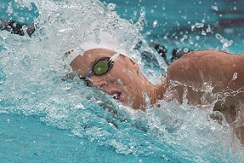
SDM: Some sports get participation across the board while others have been working to target participation initiatives to specific groups.
Hogan: We want our membership to reflect our country’s ethnic demographics more than it does. For example, African Americans make up only one and a half to two percent of our membership. We have statistics that tell us that 70 percent of African Americans and 60 percent of Hispanic Americans do not know how to swim. If we don’t make inroads in getting those and other ethnicities involved in the sport, it will hurt the long-term growth and success of our sport.
SDM: Does USA Swimming offer any support for communities interested in growing their facilities or their facility use?
Hogan: With the growth we’ve enjoyed, we’re beginning to reach full capacity in many of the pools in use out there. We would love to see the demand for aquatic programs to push communities to build more pools. We have created a facilities development department at USA Swimming. If communities and clubs want to build pools, we have staff to help them develop feasibility studies and business plans. We also have an aquatic programing specialist who helps people develop plans for programming to maximize their pool use. We currently do not have the resources to fund new pools or improvements, but we are able to provide advice to people who are trying to build or expand their facilities.
